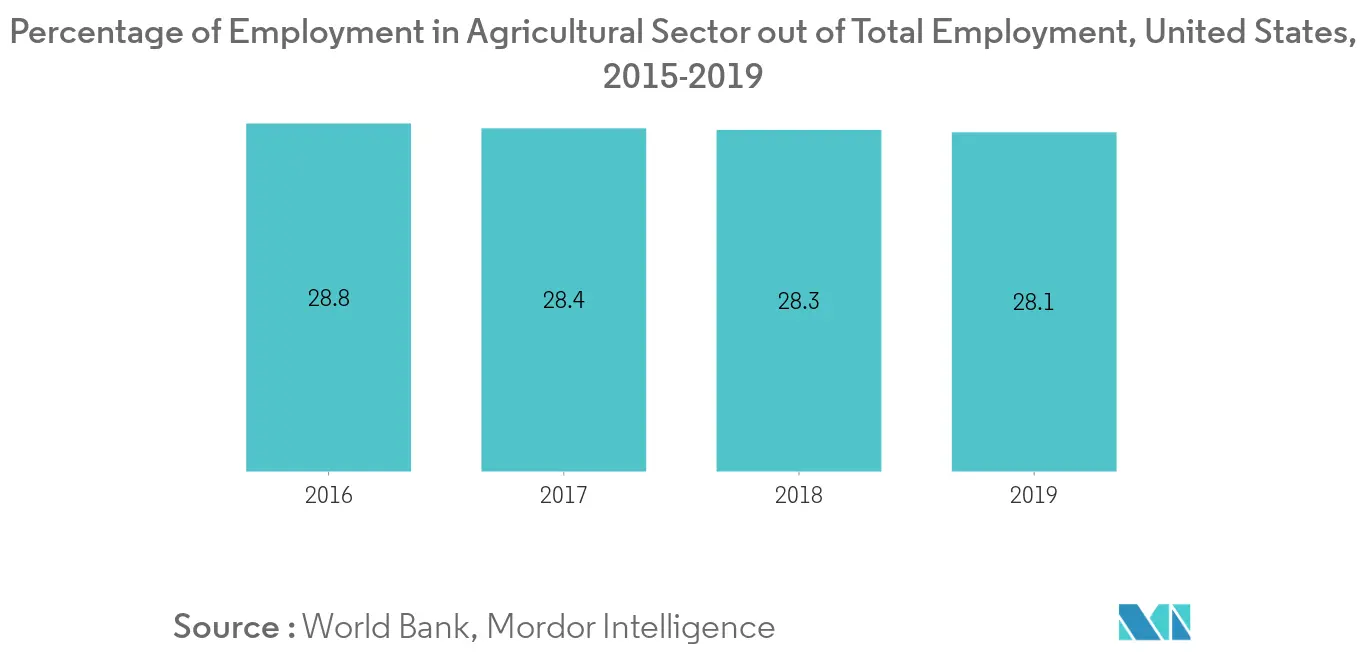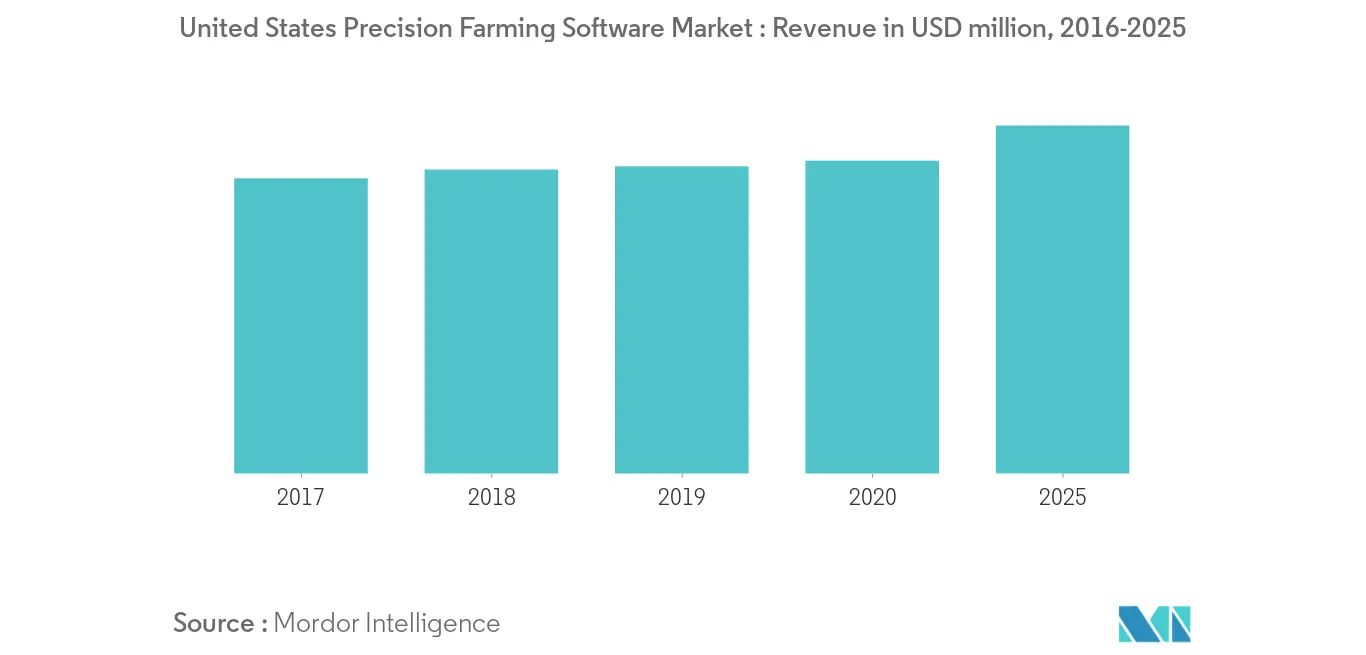Market Trends of United States Precision Farming Software Industry
Farm Labor Shortage and Rise in Average Farm Size
The United States has been witnessing an acute shortage of farm laborers. A survey by the California Farm Bureau revealed that more than 40% of the farmers have faced a consistent labor shortage, for various farm operations in the state, since the past five years, which has further led to an increased adoption rate of precision farming technologies, for ensuring better management of farm resources. According to the World Bank database, the percentage of employment in agriculture out of total employment fell drastically from 33.2% in 2010 to 28.14% in 2019. On an average, there was a decline of 22.9% in the field and crop workforce in the United States during 2002-2014, and the average age of immigrant and farmworkers rose from 37.3 years to 41.6 years and 37.4 years to 38.8 years, between 2011 and 2017, thus, signifying the need for substitution of manual laborers. The average farm size is increasing at the rate of two acres per farm since 2016, and the total number of farms declined by 13,000 to 2,029,000, in 2018. The large-holding farmers have, therefore, grown well-positioned to use precision farming software to automatically identify field surroundings and respond to variations. As per a study conducted by the Economic Research Service (ERS) in 2016, large farms were more likely to adopt precision agriculture technologies, with some of the highest adoption rates witnessed across farms of more than 3,800 acres. Till 2013, the guidance systems had the highest adoption rate in precision technology, with application in 45-50% of the area planted with corn, rice, soybean, and peanuts, followed by GPS soil mapping on 30%, and variable rate application (VRT) on 28-34% of the land. It was found that VRT increased profitability by about 1% and GPS mapping by almost 3% on cornfields in the country. Moreover, a study conducted in the mid-western state of North Dakota in the United States found that 34% farms used GPS guidance systems and 27% of the farms used autosteering systems, which saved monetized values of USD 733.85 and USD 851.27 on an average farm, in terms of time and fuel. As a result, the shortage of farm labor, accompanied with rising average farm size, is expected to drive the rate of adoption of precision farming technologies among the farmers, thereby, providing a boost to the overall precision farming software market, during the forecast period.

Crop Management Software Dominates the Market
The precision farming software offering its services under the crop management segment was valued at USD 164.8 million in 2019. Over the years, the US agriculture sector has undergone a transformation driven by technologies, and it seems very promising as it is enabling the primary sector to move to the next level of farm productivity and profitability. In October 2016, the United States Department of Agriculture reported that precision agriculture technologies reported increased net returns and operating profits. For instance, GPS mapping had shown the largest impact on precision agriculture technologies, with an increase in the operating profitability of almost 3% on corn farms. Similarly, the impact of mapping on net returns is almost 2%. Moreover, guidance systems raised operating profits by 2.5% and net returns by 1.5%, respectively. Thus, the increasing profitability and net returns from the precision agriculture are accelerating the adoption of precision farming technologies, thereby, promoting the adoption of precision farming software over the past few years. A study conducted by USDA, in 2017, revealed that yield mapping and global positioning system (GPS) software recorded the highest adoption for corn and soybean crops when compared to others in the US market. The study also mentioned that large farms of over 2,900 acreages has double the adoption of yield monitoring software, and the adoption rate ranging between 70% and 80%. The growing adoption trend of crop management software is primarily offset by the increasing levels of unpaid labor and higher yield goals, representing the farmers' self-reported yield potential is affecting the adoption of precision agriculture technologies in the US market. Trimble Inc., AgDNA Pty Ltd, Granular Inc., and AgJunction, among others, are few major companies indulged in offering precision farming software solutions under the crop management segment. Yield monitoring, soil mapping, crop scouting, and harvest monitoring are the popular services offered by the popular software products in the US market. Thus, the rising product innovation, coupled with the increasing focus toward profitability enhancement backed up with the rising adoption of crop management software in the large-scale farms, especially in the corn and soybean sectors, is likely to further accelerate the precision farming crop management software sales in the years to come.


